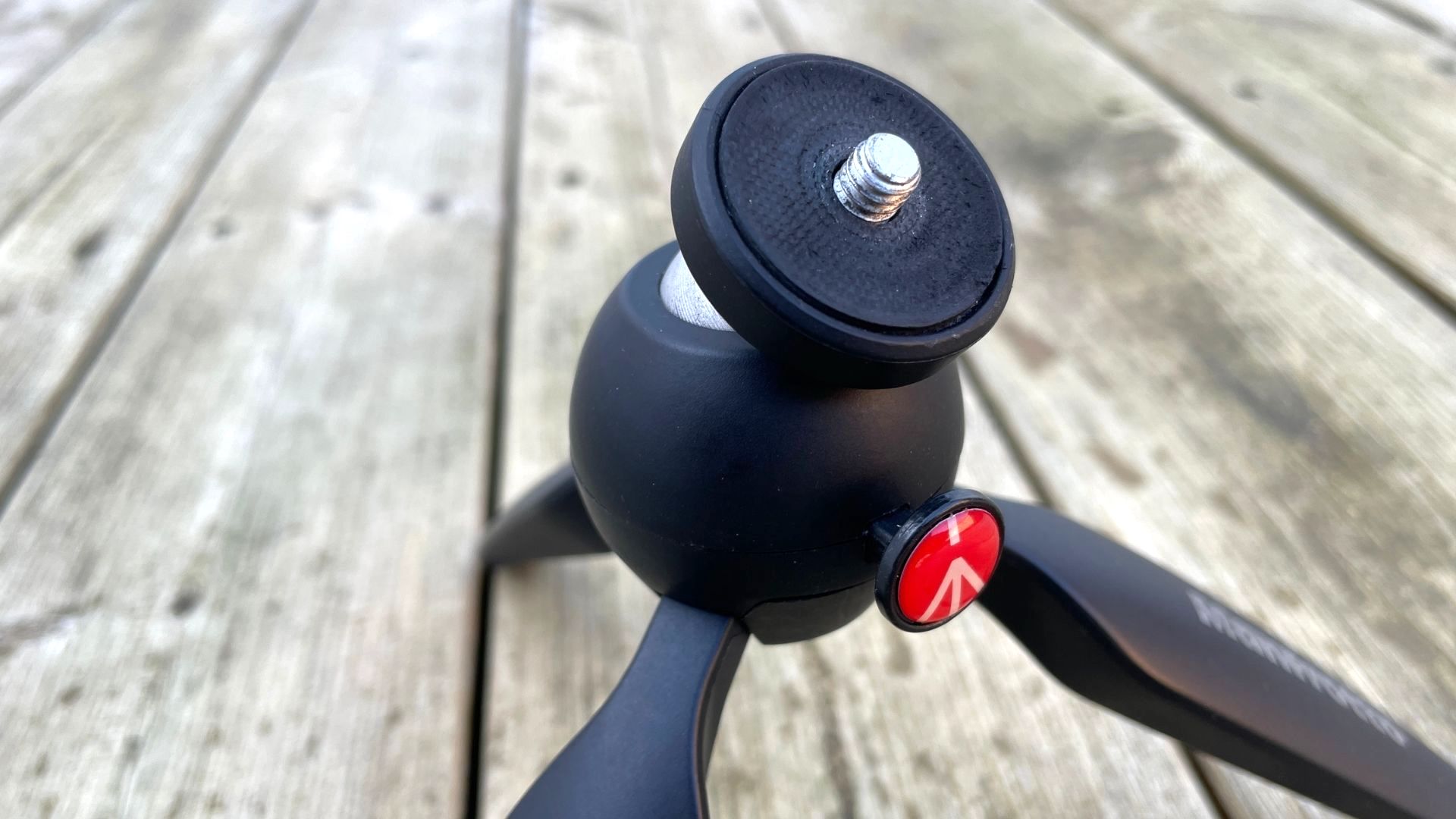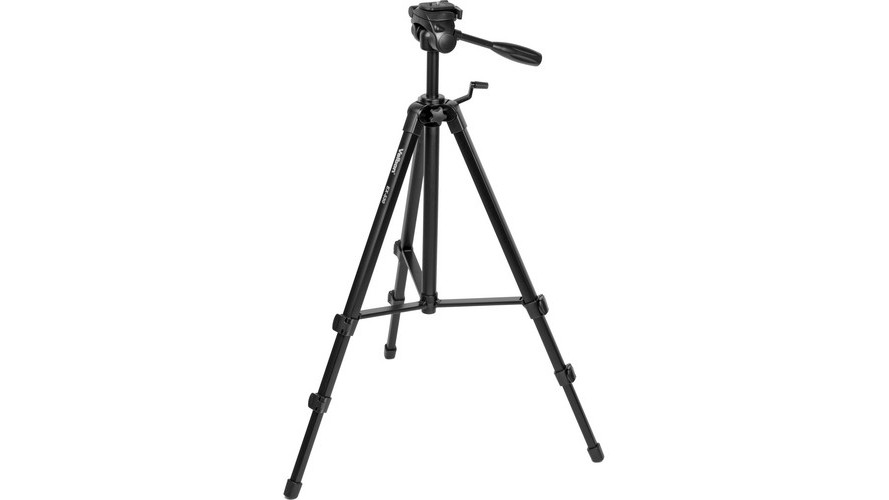The best budget tripods: get the support you need without spending over the odds
A solid and sturdy tripod needn’t make a massive hole in your photography budget. Here are some of the most cost-effective options on the market right now.

In the mirrorless march to overachieving technology, IBIS (In-Body Image Stabilization) has become a key feature in the vast majority of recent and current cameras. Claims of up to 8-stop effectiveness, or thereabouts, are frequently bandied about, enabling you to shoot handheld under very low lighting conditions. Even so, a decent tripod is still a must-have accessory for most of us, enhancing our versatility as a photographer or videographer. There are many camera techniques that simply aren’t possible without a good, solid camera support, and while tripods can come at quite a high price, there are plenty of budget-friendly options that really deliver.
The main worry is that a small outlay will get you a poor-quality product. There’s certainly the potential for false economy, so it’s best to stick to reputable brand names, many of whom have done a commendable job of offering affordable tripods alongside their more expensive products. Depending on your needs, you’ll want to look at slightly different types of budget tripod, and we’ve included plenty of options in this guide. For those with ultra-light setups who just need a straightforward support, we’ve included a couple of tabletop tripods. We’ve also added in some cheap tripods with three-way heads that are optimized for video, as well as options with reversible central columns for low-down shooting – this is great for macro and close-up work.
Sticking to a low budget does rule out certain types of tripod, so you might need to stick with aluminum legs rather than splashing out on pricey carbon fiber. You can also expect a relatively simple head as part of a complete kit, but there are still options for various different types. Let’s take a closer look.

Jon spent years at IPC Media writing features, news, reviews and other photography content for publications such as Amateur Photographer and What Digital Camera in both print and digital form. With his additional experience for outlets like Photomonitor, this makes Jon one of our go-to specialists when it comes to all aspects of photography.
The Quick List

With quick setup and easy adjustments, plus a comfortable maximum height, this is all the tripod you need at an affordable price. Read more below…

The three-way head included with this tripod is ideal for shooting video, and there’s a kit that adds a smartphone holder as well. Read more below…

Folded down, this tripod fits in your pocket, but it can handle a mirrorless camera or small DSLR when the occasion demands it. Read more below…

The flexible legs of this small tripod help it cope with all sorts of situations, with a kit adding adding more legs and a smartphone clamp. Read more below…

This tripod’s reversible center column and Rapid Flip Mechanism mean you can easily get your camera near ground level. Read more below…

The three-way head included here gives you more stability and accuracy than the typical ball head, which means smoother panning. Read more below…
The best budget tripods
Why you can trust Digital Camera World
Best budget tripod overall

1. Manfrotto Element MII Aluminum
Our expert review:
Specifications
Reasons to buy
Reasons to avoid
Manfrotto has consistently excelled in offering budget-friendly photo and video accessories alongside its premium products. One such option is the Element MII Aluminum, a tripod that combines affordability with impressive specifications. Typically available for around $100, this tripod delivers excellent value.
The Element MII Aluminum supports up to 8kg of equipment, sufficient for most photographers and videographers. This robust design ensures it can handle a variety of cameras and gear, from lightweight mirrorless cameras to heavier DSLRs. Its maximum height of 160cm allows for versatile shooting angles, whether at eye level or from higher vantage points.
Setting up the tripod is easy, thanks to its twist-lock legs that can be quickly deployed. The easy-switch leg angle selectors make it simple to adjust the tripod’s position, ensuring stability on uneven surfaces or for low-angle shots.
Ideal for a day of city-exploring photography, the Element MII Aluminum's lightweight and compact design makes it easy to carry around, while its quick-deploy functionality ensures you never miss a spontaneous photo opportunity. When you're done shooting, the tripod packs down neatly, making it convenient to transport and store.
Best budget tripod for vlogging

2. Joby Compact Advanced Tripod
Our expert review:
Specifications
Reasons to buy
Reasons to avoid
Joby, known for its flexible GorillaPod tripods, has expanded its product line to include various camera supports. The Compact Advanced tripod is a more conventional, lightweight option for vloggers. Its neat folding design makes it highly portable, and it includes a three-way head for smooth camera movements.
For a bit more, you can get the kit with the GripTight 360 Phone Mount, which enhances versatility by allowing smartphone mounting. This mount uses the same quick-release plate as other Joby products, enabling easy swapping between different setups, which is especially useful if you already own a GorillaPod.
Overall, the Joby Compact Advanced tripod is a practical choice for vloggers and photographers, offering portability, compatibility with other Joby products, and reliable support for various shooting scenarios.
Best budget tabletop tripod

Specifications
Reasons to buy
Reasons to avoid
Tabletop tripods can be invaluable in various situations, and the Manfrotto Pixi is one of the best low-priced options available. Despite its affordable price, the Pixi boasts a surprisingly robust build quality and features a built-in ball head for smooth, precise adjustments.
The Pixi supports camera kits up to 1kg, making it suitable for lightweight mirrorless setups or entry-level DSLRs with smaller lenses. While it may not handle heavier professional gear, it is an excellent choice for more compact systems, providing a stable and secure platform.
Its compact, pocketable design enhances the Pixi's appeal, making it easy to carry in a camera bag, backpack, or even a large pocket. This portability is ideal for travel photography, vlogging, or any situation where a full-sized tripod would be impractical.
The Manfrotto Pixi is an outstanding tabletop tripod offering exceptional value. Its durable build, built-in ball head, and compatibility with lightweight camera setups make it a versatile and practical tool for photographers and videographers.
Read more: Manfrotto PIXI review
Best budget tripod for smartphones

Specifications
Reasons to buy
Reasons to avoid
Flexi-leg tripods have become popular with the rise of smartphones as content creation tools, and the Benro KoalaPod is a top choice in this category. It features three extendable, detachable legs—plus two extra legs in the kit we tested—that can be twisted and shaped to balance your camera or smartphone on uneven surfaces or grip onto objects.
With a carrying capacity of 1.5kg, the KoalaPod is ideal for lighter setups, particularly smartphones. The included smartphone clamp highlights its focus on mobile content creators. Although positioning the flexible legs securely can take some practice, the KoalaPod offers superb versatility once mastered.
The Benro KoalaPod is a highly adaptable tripod perfect for modern content creators. Its flexible legs and lightweight design make it an excellent choice for capturing stable shots in various environments.
Read more: Benro KoalaPod with Smartphone Holder review
Best budget tripod for macro

5. Slik Sprint Pro III with SBH-100DQ
Our expert review:
Specifications
Reasons to buy
Reasons to avoid
A stable support is crucial for macro shooting, where precise focusing is essential and getting close to the ground is often necessary to fill the frame with your subject. The Slik Sprint Pro III with SBH-100DQ stands out as an excellent budget tripod for macro photography, offering features tailored to these needs.
One of the key features of the Sprint Pro III is its reversible two-section center column. This design allows the tripod to be adjusted for very low-angle shots by flipping the center column upside down, bringing your camera as close to the ground as possible. Combined with the Rapid Flip Mechanism, which enables quick and easy adjustments, this tripod allows you to position it at a minimum working height of just 15.7cm from the ground. This capability is particularly useful for macro photography, where getting close to your subject is essential.
In addition to its height-adjustment features, the Sprint Pro III is designed with rubberized leg grips and robust flip locks. The rubber grips provide added stability and comfort, making it easier to handle the tripod in various conditions. The flip locks ensure secure leg adjustments and smooth operation, allowing you to set up and stabilize the tripod quickly and efficiently.
Overall, the Slik Sprint Pro III with SBH-100DQ is a highly effective tripod for macro photography on a budget. Its ability to get very low to the ground, combined with its sturdy build and user-friendly adjustments, makes it an ideal choice for photographers looking to capture detailed close-up shots with precision and stability.
Best budget tripod for panning

6. Velbon EX-530
Our expert review:
Specifications
Reasons to buy
Reasons to avoid
When buying a tripod, the head it comes with is crucial. The Velbon EX-530 excels in this area with its three-way pan-and-tilt head, ideal for creating stitched panorama shots or shooting video with smooth panning. This head allows precise adjustments in both horizontal and vertical directions.
The tripod also features a radial leg brace for added stability and has a load capacity of 4.1kg, supporting a wide range of camera setups, including heavier DSLRs and lenses. Although it is relatively bulky, its sturdiness and functionality make it a great choice if you don’t mind a bit of extra weight.
Offering excellent stability and flexibility, it's a solid option for photographers and videographers who need reliable performance and can accommodate a larger tripod.
How to choose the best budget tripod
Aluminum or carbon fiber?
These are the two most common materials used for tripod legs. Aluminum tripods are cheaper but weigh more. They’re ideal if you want the maximum stability for your money. Carbon-fiber tripods cost more but weigh less and absorb vibration better. They’re good if cost is less important than weight – but the price premium can be substantial.
How much height do I need?
Shots aren’t always improved by shooting them at eye level (lower often works best), but it’s also about getting a comfortable working height. Check the height without the column being extended, if you can.
Check the folded length
The weight of a tripod is important if you’re going to carry it any distance, but so is its folded length. If it’s too long to strap to your bag, and it’s unwieldy in trains or climbing over stiles, then it’s going to put you off taking it anywhere. Many so-called ‘travel’ tripods have legs that fold upwards for storage and completely enclose the head. This makes them smaller and neater when folded and easier to carry around.
How many leg sections?
Tripod legs may have three, four, or five sections. A larger number of sections means the tripod is shorter and more portable when it’s folded, but it will usually take a little longer to set up and may well not be quite as stable.
What type of leg locks?
These come in two main types: twist locks and flip locks. Twist locks take up less space and are generally a little quicker to use – you can often unlock all the leg sections in a single movement when you’re setting the tripod up. Flip locks are operated individually and may be a bit slower. Try both types to see which you prefer.
Leg angles
Most tripods have legs that can be angled independently – which is particularly useful when working on sloping sites or in cramped areas. The standard leg angle will be fine for regular use, but it’s often useful to splay one or more legs outwards on uneven surfaces or to rest them on walls, say. Splaying out all three legs will allow you to shoot from a much lower angle.
What type of head should I get?
Sometimes the tripod head is included with the legs, sometimes not. You can change one head for another depending on how you like to work, as the connection is standardized. Ball heads and three-way heads are the most common types. Ball heads are compact and quick to use, but not so good for small, controlled movements. Three-way heads are larger but allow precise adjustments for each axis independently.
You can also find other, specialist heads. Geared heads allow you to make fine adjustments to camera angles. Gimbal heads are designed for use with long, heavy lenses – which can otherwise can unbalance a tripod. And then there are specialist heads for panoramas and video too.
Attaching your camera
Most tripods are sold with heads, and most heads have a quick-release plate so that you can detach the camera in moments for handheld shots. The Arca Swiss-compatible plate is by far the most common, meaning you can swap between different tripod heads, even if they're made by different manufacturers. However some makers, notably Manfrotto, make their own bespoke QR plates, which can be a nuisance if you have two or more tripods from different makers.
Extra features
Detachable monopod legs: These sound really useful – a detachable leg you can then screw into the center column to make a monopod. In practice, we find these often lack the rigidity of a 'real' monopod unless you're starting with a particularly substantial tripod.
Center column: Not all tripods come with a center column, but most do. You can extend this upwards to increase the height of the camera, although this introduces extra wobble. On some tripods, the center column can be rotated to produce an angled boom, which is perfect for overhead shots, macro work, and tabletop photography. Using the center column does reduce the stability of the tripod, however, so is best avoided with long exposures.
Bowl base: This is a video-specific feature that allows you to get the base level without having to make a whole series of tiny adjustments to the leg length. A level base is essential for a video where you want to make panning movements, and the best video tripods come with bowl or leveling bases as standard.
Types of feet: Rubber feet are fine on most surfaces but best on carpets and wooden floors, where you don’t want to cause damage. Metal spikes are good for soft and uneven ground. Some tripods have rubber feet, which can be screwed back to reveal spikes.
How we test tripods
We measure the maximum operating height of each tripod and its folded height for carrying, complete with head attached. We also measure the combined weight of each set of tripod legs and head, using electronic scales, and measure the diameter of all leg sections, from the widest to the thinnest, using digital calipers.
We check the ease of use, smoothness and precision of all available adjustments in each set of tripod legs and heads. This ranges from adjusting leg sections and pivot facilities (where available), to the locking mechanisms of the head, as well as independent pan and friction damping adjustments, where fitted.
To check overall stability, we shoot with a range of camera bodies fitted with wide-angle, standard, telephoto and macro lenses. We look for good resistance to flexing and vibrations throughout the whole range of operating heights, including the tallest available settings with the legs and center column fully extended.
Find out more about how we test and review on Digital Camera World
Get the Digital Camera World Newsletter
The best camera deals, reviews, product advice, and unmissable photography news, direct to your inbox!
Jon spent years at IPC Media writing features, news, reviews and other photography content for publications such as Amateur Photographer and What Digital Camera in both print and digital form. With his additional experience for outlets like Photomonitor, this makes Jon one of our go-to specialists when it comes to all aspects of photography, from cameras and action cameras to lenses and memory cards, flash diffusers and triggers, batteries and memory cards, selfie sticks and gimbals, and much more besides.
An NCTJ-qualified journalist, he has also contributed to Shortlist, The Skinny, ThreeWeeks Edinburgh, The Guardian, Trusted Reviews, CreativeBLOQ, and probably quite a few others I’ve forgotten.
